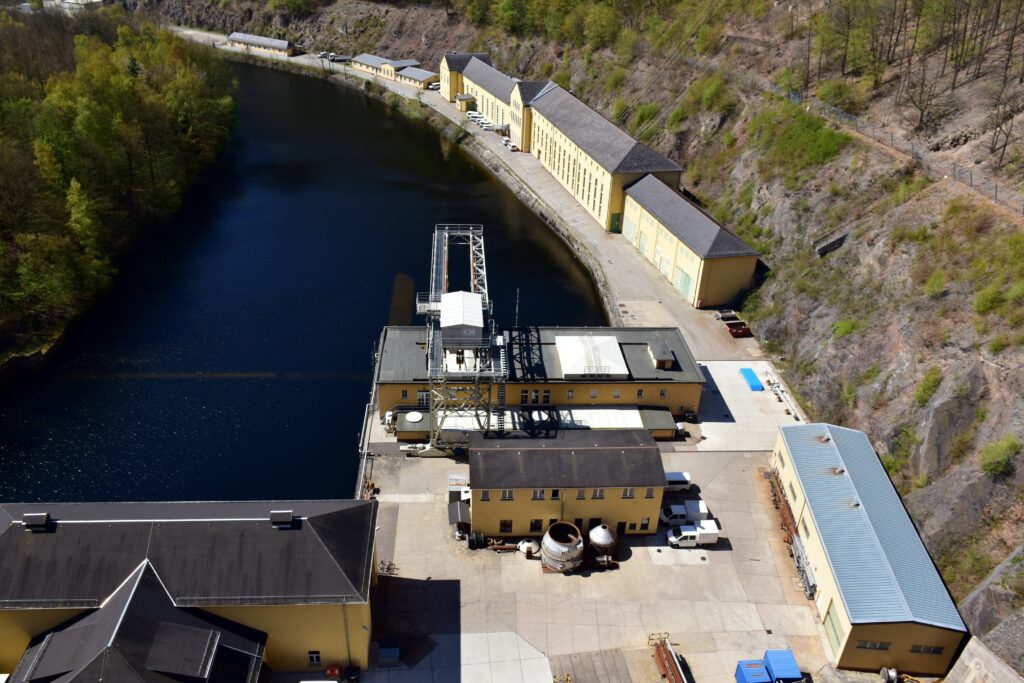Ever wondered how much power you would need to run a 2000 sq ft house during a blackout? Look no further! In this article, we will explore the question of how many kilowatts (kw) of generator power is required to keep your essential appliances and systems running smoothly. Whether you’re a homeowner or just curious about the ins and outs of backup power, we’ve got you covered. Let’s dive in and find out how much power you’ll need to keep the lights on!
Understanding Power Consumption
When it comes to running a household smoothly, understanding power consumption is essential. By knowing the power requirements of your appliances and devices, you can make informed decisions about choosing the right generator for your needs. In this article, we will explore common household appliances and their power consumption, the different types of generators available, and how to calculate the required kilowatts for your home. We will also discuss the impact of square footage on power consumption, the role of home insulation, power requirements for heating and cooling systems, individual room power needs, generator size recommendations, additional considerations when choosing a generator, and the costs associated with running a home generator.
Common Household Appliances and Their Power Consumption
Standby vs Running Watts
Before diving into the calculations, it’s important to understand the terms “standby watts” and “running watts.” Standby watts refer to the power consumed by an appliance or device when it is in standby mode, but not actively running or being used. Running watts, on the other hand, represent the power consumed by an appliance when it is in use. By knowing both the standby and running wattage, you can accurately determine the total power consumption of an appliance or device.
Common household appliances such as refrigerators, washing machines, dishwashers, and televisions have different power consumption levels. For example, a typical refrigerator may have a standby wattage of around 15-20 watts and a running wattage of 150-600 watts, depending on its size and features. A washing machine may have a standby wattage of 3-5 watts and a running wattage of 1000-2500 watts. Understanding these power consumption levels is crucial when calculating the total power requirements for your home.
Energy Star Appliances and Power Consumption
When considering the power consumption of household appliances, it’s worth noting appliances with the Energy Star certification. Energy Star appliances are more energy-efficient, meaning they consume less power compared to their conventional counterparts. This can result in significant savings on your electricity bills. The Energy Star label is typically found on appliances like refrigerators, dishwashers, washing machines, and air conditioners. When shopping for new appliances, look for the Energy Star label to ensure you’re choosing energy-efficient options.

Types of Generators
Standby Generators
Standby generators are permanently installed outside your home and are connected to your electrical system. They are designed to automatically turn on when a power outage occurs and provide a seamless power supply to your home. Standby generators are usually fueled by natural gas or propane and come in various sizes to accommodate different power requirements. They are typically more expensive than portable or inverter generators but offer the convenience of automatic operation and a higher power output.
Portable Generators
Portable generators, as the name suggests, are designed to be mobile and easily transportable. They are typically fueled by gasoline or propane and can be used to power specific appliances or devices during a power outage. Portable generators are a more affordable option compared to standby generators, but they require manual operation and monitoring. They come in different sizes and power outputs, allowing you to choose one that suits your needs.
Inverter Generators
Inverter generators are known for their quiet operation and clean power output. They use advanced technology to produce AC power and then convert it to DC power before converting it back to AC power at a stable frequency and voltage. This process makes them ideal for powering sensitive electronics, such as laptops, smartphones, and televisions, without the risk of damage. Inverter generators are available in various sizes and are often more compact and lightweight than other generator types.
Compare and Contrast: Different Types of Generators
Each type of generator has its advantages and disadvantages. Standby generators offer automatic operation and higher power outputs but come at a higher cost. Portable generators provide mobility and affordability but require manual operation and monitoring. Inverter generators offer clean power output and quieter operation but may have a lower overall power output compared to other types. When choosing a generator, consider your power requirements, budget, and convenience preferences.
Calculating Required Kilowatts
How to Calculate Total Power Consumption
To calculate the required kilowatts for your home, you need to determine the total power consumption of all the appliances and devices you wish to power during a blackout. Start by listing all the appliances you consider essential, including refrigerators, freezers, heating or cooling systems, lights, and electronics. Find their rated wattages (both standby and running watts) in their user manuals or by checking the labels on the appliances.
Add up the running watts of all the appliances you want to run simultaneously. This represents the total amount of power you will need to provide during a power outage. It’s important to note that some appliances, like air conditioners or refrigerators, have a higher starting wattage, known as the “surge” wattage, which is needed when the appliance initially powers up. Make sure to account for these surge wattages when calculating the total power consumption.
Importance of Sizing Your Generator Correctly
Properly sizing your generator is crucial to ensure it can meet the power demands of your home. If you choose a generator that is too small, it may not be able to handle the load, causing it to overload and potentially damage both the generator and your appliances. On the other hand, if you choose a generator that is too large, it may be inefficient and waste fuel or pose unnecessary costs upfront. It’s important to accurately calculate your power requirements to determine the appropriate generator size.
Significance of Square Footage in Power Requirement Calculation
Square footage plays a significant role in determining the power requirements of your home. A larger home with more square footage generally requires more power to operate efficiently. The size of your home affects the number and size of appliances you have as well as the heating or cooling systems in place. When calculating your power requirements, consider your home’s square footage as one of the factors that influence your overall power consumption.

The Role of Square Footage
Average Power Consumption in a 2000 sq ft Home
A 2000 sq ft home is considered to be of moderate size. On average, such a home may consume around 1200-1500 kilowatt-hours (kWh) of electricity per month. However, it’s important to note that power consumption can vary significantly depending on factors such as the number of occupants, climate, insulation, and energy-efficient practices.
Influence of Household Size on Power Consumption
The number of occupants in a home can have a direct impact on power consumption. More individuals generally mean more appliances, lights, and electronics being used simultaneously, resulting in higher power demands. When calculating your power requirements, consider the number of people living in your home and their usage patterns to ensure an accurate estimation.
Variations in Energy Use between Different Climate Zones
Climate plays a crucial role in determining energy consumption. Homes in regions with extreme temperatures, whether hot or cold, tend to have higher power requirements for cooling or heating purposes. It’s important to consider the climate zone in which your home is located when estimating your power needs. Understanding the climate zone can help you choose the most suitable heating and cooling systems as well as insulation options.
Impact of Home Insulation on Power Consumption
Importance of Home Insulation
Proper insulation is essential in reducing energy consumption and maximizing the efficiency of your heating and cooling systems. Insulation prevents heat transfer, keeping your home cooler in the summer and warmer in the winter. This reduces the strain on your cooling and heating systems, resulting in lower power consumption. Investing in proper insulation can lead to significant energy savings and a decrease in your overall power requirements.
How Insulation Can Affect Your Power Requirement
The effectiveness of insulation can greatly impact your power requirements. Well-insulated homes retain the desired temperature for longer periods, reducing the frequency and duration of heating or cooling cycles. In contrast, poorly insulated homes experience more heat loss or gain, leading to increased energy consumption to maintain a comfortable temperature. By improving your home’s insulation, you can potentially lower your power requirements and decrease your reliance on electricity during extreme weather conditions.

Power Requirements for Heating and Cooling Systems
Air Conditioning Systems and Their Energy Consumption
Air conditioning systems are one of the significant power consumers in homes, especially in warmer climates. The power consumption of an air conditioner depends on factors such as its size, energy efficiency rating, usage patterns, and the climate it operates in. Typically, air conditioners can consume anywhere from 1000 to 5000 watts when running, with larger units naturally consuming more power. To accurately calculate your power requirements, consider the specific details of your air conditioning system.
Heating Systems and Their Energy Demand
Heating systems, particularly during colder months, significantly impact power consumption. The type of heating system you have, whether it’s a furnace, heat pump, or radiant heating, will determine the power requirements. Furnaces and heat pumps typically consume between 1000 and 5000 watts, depending on their size and energy efficiency. Radiant heating systems, such as electric baseboards or radiant floor heating, can consume around 250 to 1500 watts. Understanding the power demands of your heating system is crucial in determining your overall power requirements.
Tips for Reducing Cooling and Heating Energy Consumption
There are several measures you can take to reduce energy consumption associated with cooling and heating systems. Regular maintenance, such as cleaning filters and checking for leaks, can optimize their efficiency. Proper insulation and sealing can prevent heat loss or gain, reducing the workload on your cooling and heating systems. Additionally, utilizing programmable thermostats and adjusting temperature settings according to your needs can lead to substantial energy savings. By implementing these energy-saving tips, you can lower your power requirements and ultimately decrease the size of the generator you need.
Examining Individual Room Power Needs
Kitchen Power Requirements
The kitchen is typically a hub of activity, with various appliances and devices requiring power. Refrigerators, stoves, ovens, microwaves, dishwashers, and small kitchen appliances all contribute to the overall power consumption in a kitchen. Make a list of the kitchen appliances and their power requirements to accurately estimate the power needed to keep your kitchen appliances running during a power outage.
Living Room Power Requirements
Living rooms often contain entertainment systems, such as televisions, sound systems, and gaming consoles, as well as lighting fixtures and other electronic devices. Each of these devices has its own power consumption, which should be taken into account when calculating your power requirements for the living room.
Bedroom Power Requirements
Bedrooms typically have lighting, fans, air purifiers, and electronic devices like televisions and alarm clocks. Although individual bedroom power needs may be relatively low compared to other rooms, it’s essential to consider all the required devices to ensure you have enough power to meet your needs during a power outage.
Bathroom Power Requirements
Bathrooms generally have lighting fixtures, exhaust fans, and heating elements such as towel warmers or radiant floor heating. While the power requirements in a bathroom may be lower compared to other rooms, it’s still important to include them in your calculations to ensure your generator can power all the necessary devices in your home.
Generator Size Recommendations for a 2000 sq ft Home
Minimum Generator Size Required
The minimum generator size required to power a 2000 sq ft home will depend on your specific power requirements. As a general guideline, a minimum generator size of 5-7 kilowatts (kW) is recommended for smaller homes. This size should be sufficient to power essential appliances and devices during a power outage. However, it’s important to consider your individual power needs and consult with a professional to determine the most appropriate generator size for your specific circumstances.
Optimum Generator Size for Efficiency
To ensure optimal efficiency and reliability, it’s recommended to choose a generator that provides a bit of overhead capacity. A generator operating at around 70-80% of its maximum capacity is typically more efficient and has a longer lifespan. For a 2000 sq ft home, an optimum generator size in the range of 8-12 kW may be suitable, depending on your power requirements. Properly sizing your generator ensures it can handle peak demands without being overloaded.
Maximum Generator Size: Do’s and Don’ts
While it may be tempting to choose the largest generator available to ensure all your power needs are met, it’s important to avoid going overboard with the size. Oversizing a generator can lead to inefficiency and unnecessary costs. A generator that is significantly larger than your power requirements may operate at a lower load, resulting in poor fuel efficiency. Additionally, larger generators tend to have higher upfront costs and can occupy more space. It’s essential to strike the right balance between your power requirements and the generator size for optimal performance and cost-effectiveness.
Additional Considerations When Choosing a Generator
Impact of Power Outages
Understanding the impact of power outages on your daily life can help you make an informed decision when selecting a generator. Consider the frequency and duration of power outages in your area, as well as the potential inconvenience and safety concerns they may pose. A generator can provide peace of mind by ensuring a reliable power source during outages, allowing you to continue with your daily activities without disruption.
Understanding Generator Capacity
Generator capacity refers to the maximum power output of a generator. It is essential to know the capacity of your generator and compare it to your power requirements to ensure it can accommodate your needs. Generator capacity is usually stated in kilowatts (kW) and can be found in the manufacturer’s specifications. Choosing a generator with the appropriate capacity is crucial for reliable and efficient operation.
Investing in Generator Safety Features
When purchasing a generator, it’s important to consider safety features that can protect both you and your generator. Look for generators with features such as low-oil shutdown, which automatically shuts off the engine if the oil level drops too low. This prevents engine damage and potential safety hazards. Other safety features may include circuit breakers, ground fault circuit interrupters (GFCIs), and overload protection. Prioritizing safety features ensures a secure and reliable power supply for your home.
Costs Associated with Running a Home Generator
Initial Purchase and Installation Costs
The costs associated with running a home generator include both the initial purchase and installation expenses. Standby generators are generally more expensive than portable or inverter generators due to their larger size and automatic operation. The costs can vary depending on the generator’s brand, capacity, type, and additional features. Professional installation is recommended for standby generators, which adds to the overall cost. It’s important to consider both the upfront costs of purchasing a generator and the installation costs when budgeting for a home generator.
Ongoing Fuel and Maintenance Costs
Running a home generator also entails ongoing fuel and maintenance costs. Standby generators typically run on natural gas or propane, while portable and inverter generators usually use gasoline or propane. The cost of fuel will depend on the generator’s fuel efficiency and the prevailing prices in your area. It’s important to factor in the cost of fuel when estimating the overall expenses of operating a generator. Additionally, regular maintenance, such as oil changes, filter replacements, and inspections, is necessary to ensure the proper functioning and longevity of your generator. Consider these ongoing costs when budgeting for a home generator.
Comparing Costs: Standby vs Portable vs Inverter Generators
When evaluating the costs associated with running a home generator, it’s essential to compare the expenses of different generator types. Standby generators typically have higher upfront costs and require professional installation, but they offer the convenience of automatic operation and higher power output. Portable generators are more affordable upfront, but they require manual operation and monitoring. Inverter generators may have a higher initial cost but provide clean power output and quieter operation. Evaluating the costs and benefits of each generator type can help you make an informed decision based on your budget and specific requirements.
By understanding power consumption, generator types, calculating required kilowatts, the role of square footage, home insulation’s impact, power requirements for heating and cooling systems, individual room power needs, generator size recommendations, additional considerations when choosing a generator, and the costs associated with running a home generator, you will be well-equipped to make informed decisions and ensure a reliable power supply for your 2000 sq ft home. Remember to consult with professionals and consider your individual circumstances when choosing the most suitable generator for your needs.




